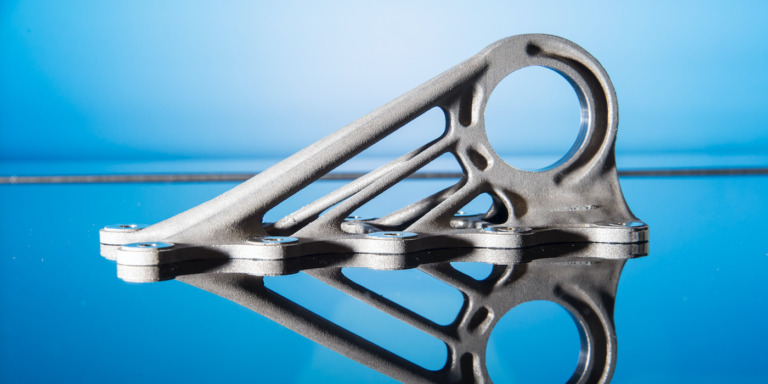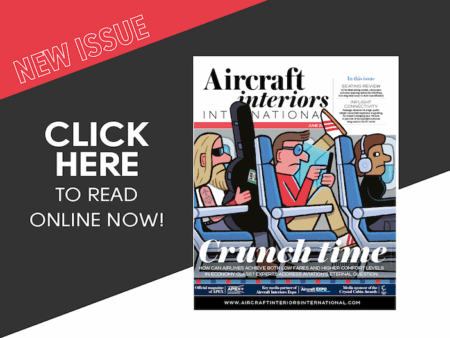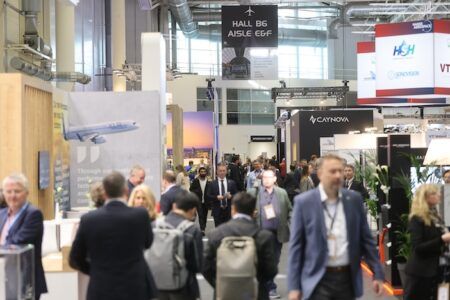The technology of additive manufacturing (AM) or additive layer manufacturing (ALM) – more commonly known as 3D printing – promises to revolutionize manufacturing processes around the world and offers aviation new opportunities to create stronger, lighter structures, for both the airframe and the cabin.
Though 3D printing has clear advantages for the aerospace industry, there is a question of gaining certification approval for these parts, which use alternative raw materials and production processes. Thus the US FAA has formed an Additive Manufacturing National Team (AMNT), which is setting up the standards for an approval process.
“AM is a new and novel technology that requires special consideration from the FAA. When a certification project for an AM part is received by an FAA geographic Aircraft Certification Office (ACO), the assigned ACO engineer will work with the appropriate directorate from the AMNT to determine what unique considerations, if any, there are for certification of a specific AM part. The requirements will be defined and agreed by the ACO, the directorate, and the applicant,” explains a representative of the FAA, who did not wish to be named.
TSO approvals
One of the challenges of the process is that – unlike traditionally manufactured materials – there is a lack
of publicly available design value data. This technology is new territory, which means that unique standards must be set for each specific AM part.
“Changing the manufacturing process from traditional methods to AM is a design change and thus must be properly substantiated with an acceptable method of compliance to the TSO minimum performance standards,” the FAA tells us. “The FAA has not defined any special requirements for TSO approval of parts manufactured with 3D printers. Regardless of the manufacturing process, the TSO manufacturer must ensure each article produced meets all the applicable TSO requirements. Similar to the part certification process, the geographic ACO would work with the appropriate FAA AM focal point to determine what unique considerations, if any, there are for the approval of a specific AM part within a TSO. Furthermore, since the TSO is an article approval, there may be additional airworthiness requirements to receive an installation approval on an aviation product, e.g. aircraft, engine or propeller.”
This is new territory, so unique standards must be set”
However, for 3D-printed subcomponents, the approvals process is rolled into the TSO approval of the final assembly. “Regardless of the manufacturing process used and the extent of its use – entire article or subcomponent – the TSO manufacturer must ensure each article produced meets all the applicable TSO requirements,” the FAA representative explains.
The AM process also raises questions about the ownership and management of intellectual property related to parts developed in the supply chain.
During an Airbus Innovation days event, Airbus’s digital transformation officer, Marc Fontaine, said that 3D-printed parts could simplify the parts management and delivery process, saving time and money.
“There may be very important changes in the future. For all aircraft families we are maintaining the capabilities of suppliers to produce the parts for our plants,” Fontaine states. “Today you can store the parts digitally. That is very different in terms of economy. Of course, if you can print parts it changes the nature and logistics of the supply chain.”
Intellectual property
When asked about the IP implications of Airbus suppliers granting the drawings and technical information necessary to manufacture these parts remotely, Fontaine replies, “Rather than shipping parts around the world, there will be a split between the parts that are shipped and the parts that can be printed at a distance. That raises other interesting questions. How do you certify that the file that you send from your design office, arriving in Singapore to be printed, is authentic? It’s raising lots of questions that we’re investigating, on cyber protection of these types of exchanges.
They don’t want to have their IP locked into any type of unique vendor proposition”
“What we see in most ALM partnerships is a very different approach to IP and to partnering. The approach of this industry for many years, and for very good reasons, has been to protect the IP and have long-running, very well-identified suppliers. We have to adapt to a world that is changing, because the technology driving several of these enablers is not currently in our industry. When we talk to these new partners, of course, they don’t want to have their IP locked into any type of unique vendor selling proposition, so we have to find new ways.
“I must say that IP in procurement is a bit of a challenge for us, but it is part of our job as part of the Digital Transformation Office to make that possible. However, finding agreements is not very difficult because we’re a big company in aerospace, and when companies have good technologies they want to team up with us. They are interested in teaming up with the big player in the sector and then they go more or less exclusively to that player. We adapt very well to that.”
Bionic network
Airbus Group has begun using AM for tooling and prototyping of commercial aircraft parts, and 2,700 plastic AM parts have been introduced on the A350 XWB. Airbus is also making 3D-printed parts for the single-aisle A320neo and the A330/A310 family of aircraft.
The company expects that 3D-printed parts will reduce weight and inefficiencies while improving the strength of components. The AM process will also greatly reduce production time and waste, with an average of 5% waste material reportedly produced during the process.
The Airbus AM project team has a workshop aiming to manufacture customized parts in less than 24 hours in order to shorten waiting times for replacement parts.
“Each time we have a missing part at assembly level it causes a major disturbance and costs money for us to recover,” says Bernard Duprieu, head of manufacturing technologies research at Airbus. “AM can be used to manufacture missing and non-standard parts quickly in low quantities.”
2,700 plastic additive manufactured parts have been introduced on the A350 XWB”
The manufacturer has turned to nature for its latest ALM part design inspiration, with a new Airbus Bionic Network team printing parts that emulate the strong, elegant structural properties of plants and animals.
Through a collaboration with Autodesk, Airbus has unveiled the world’s largest 3D-printed galley partition. The part – built as a complete assembly using custom algorithms – mimics the organic cellular structure and growth of bones.
Airbus had set requirements that the partition be structurally sound and lightweight, as part of the push to reduce fuel costs by reducing the burden of cabin interiors. The finished product weighs 45% (30kg) less than current partition designs. Airbus estimates that such weight savings could reduce CO2 emissions by 465,000 metric tons a year.
Airbus is exploring a number of natural structures to inspire new, lighter weight and sturdier aircraft parts. The strong honeycomb structure of the underside of water lilies, for example, has inspired wing flaps. Just as these structures make it possible for the thin water lily to support the weight of a small child, the channels in the wing-flap structure lets these lighter weight parts better distribute wind resistance.
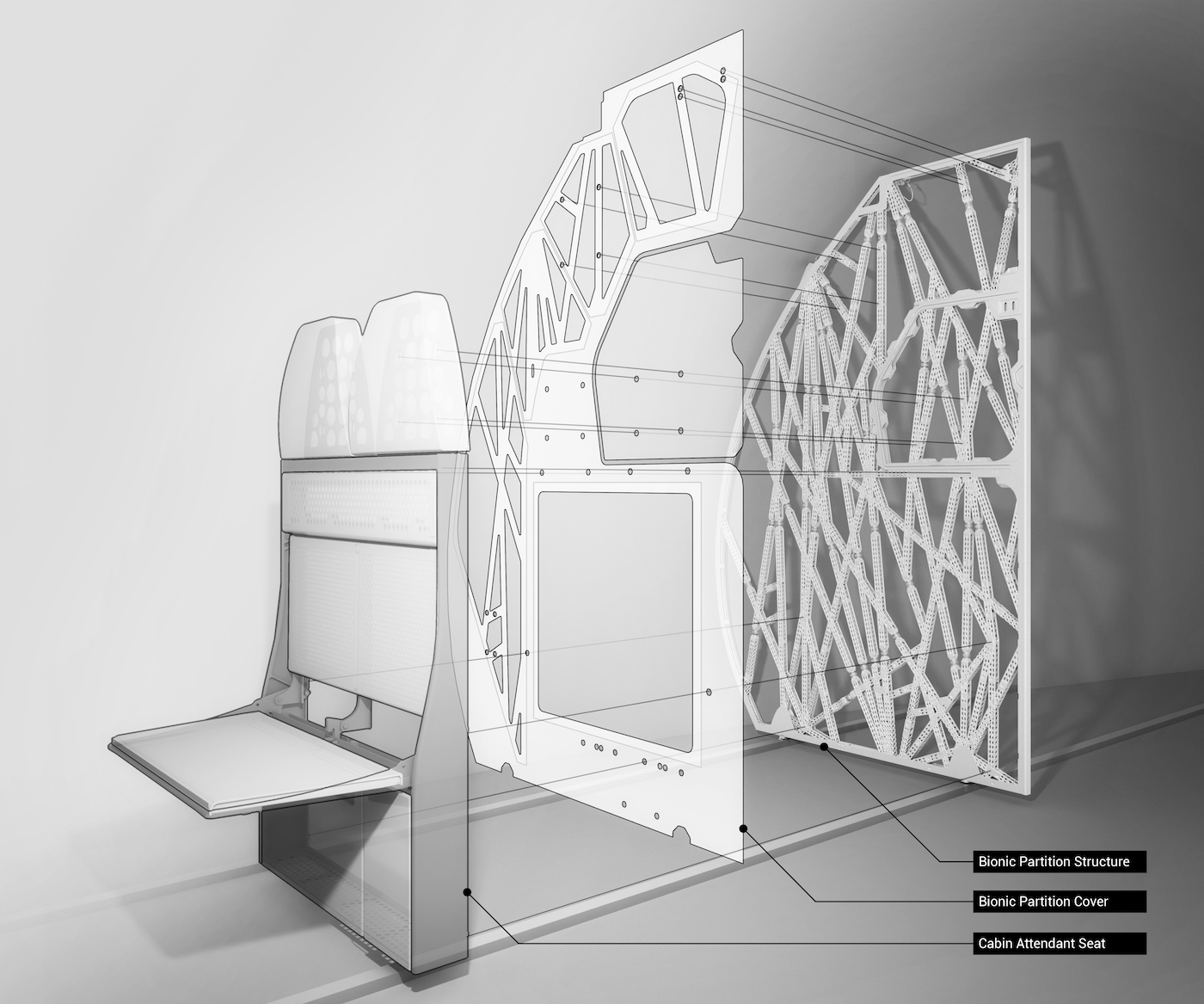
Airbus’s Bionic Network has also taken inspiration from the jaws of the angler fish, moray eel and sling-jaw wrasse to create new pivot bins with retractable lids.
“It isn’t as simple as copying nature,” Peter Sander, head of Emerging Technologies and Concepts at Airbus says of bionic 3D printing. “Successful bionics depends on establishing a deep understanding of natural materials and then working out how to apply that knowledge in the industrial world.”
Aiding the development of these bionic parts is the evolution of generative design technology, which enables designers to develop thousands of alternative structural configurations using powerful cloud computing. Also key is the development of new raw materials used in the parts printing process.
One of these groundbreaking materials is Scalmalloy, which is used for metallic AM. It has strong mechanical properties, with high resistance to stress and stretching before breaking. The Airbus application is the first time Scalmalloy has been used on a large-scale in an aircraft component.
“Combining the benefits of metallic 3D printing with new materials like Scalmalloy can greatly expand the possibilities for modern components,” states Joachim Zettler, managing director, Airbus APWorks.
Air New Zealand shows the way
Airlines are also looking at ways in which AM can support fleet maintenance. In a collaboration with Auckland University of Technology, Air New Zealand developed 3D-printed fold-down cocktail trays for its Business Premiere seat.
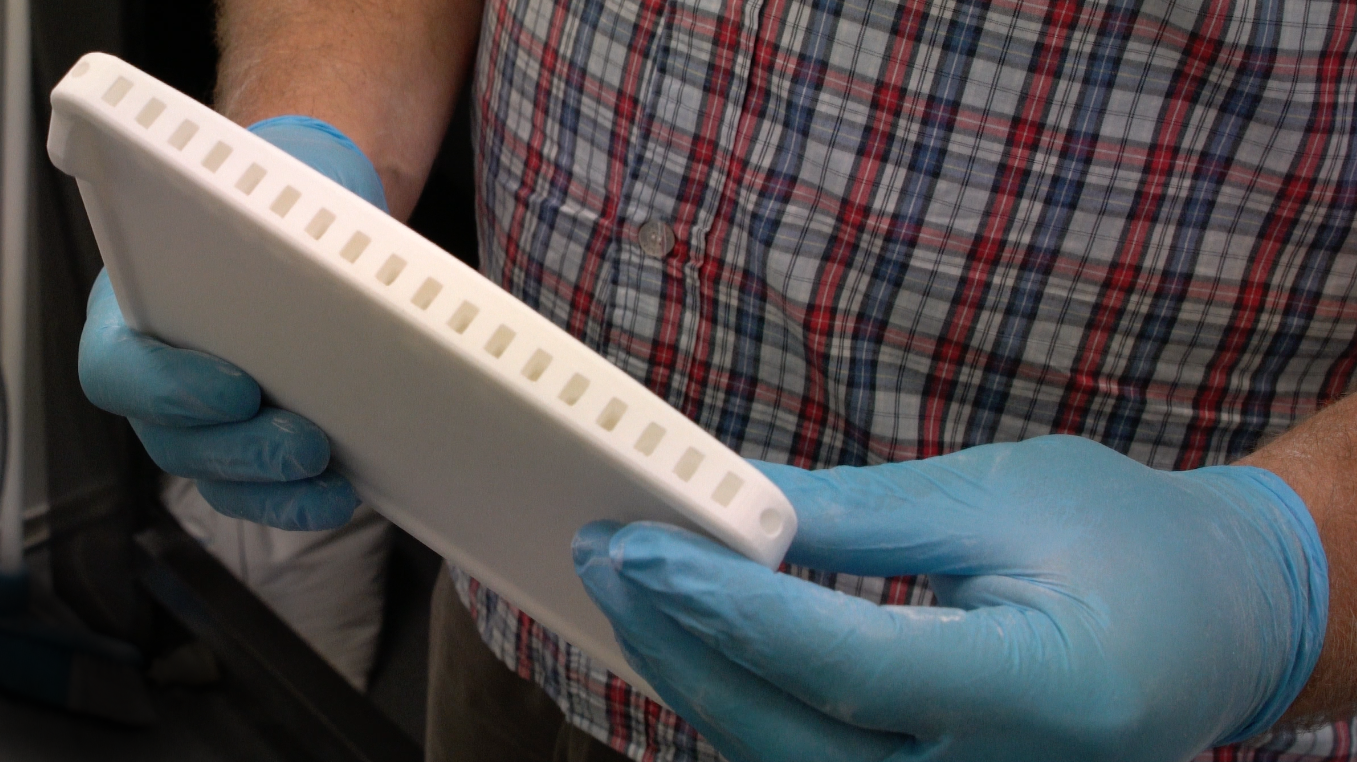
“A big advantage of 3D printing is that it enables us to make cost-effective lightweight parts ourselves, and do so quickly without compromising on safety, strength or durability,” says Bruce Parton, Air New Zealand’s chief operations officer. “Not only can’t we hold stock of every replacement part we might need, but we often only require a small number of units, which can be really expensive to produce using traditional manufacturing methods and can involve frustrating delays while a replacement part is delivered.”
The airline is exploring other 3D-printed parts that could be used in its cabins, with a natty idea being an engine-shaped wine aerator.
Boeing’s Guinness World Record
Boeing began its 3D-printing research in 1997, and has since introduced more than 50,000 additive manufactured parts to its products. The Boeing ecoDemonstrator, launched in 2015 through a special project with NASA and tourism company TUI Group, was used to test a 3D-printed aisle stand designed to reduce weight and waste. The stand was made using repurposed aerospace-grade carbon fiber generated as a by-product of production of the B787.
“As the application of additive manufacturing increases, we expect the technology will enable us to create high-performance products, raise production efficiency and improve workplace safety and first-time quality, and open up new design possibilities. For instance, we can minimize or eliminate the need for assembly by fabricating multipart assemblies as one piece and speed up production time,” explains Boeing representative, Nate Hulings.
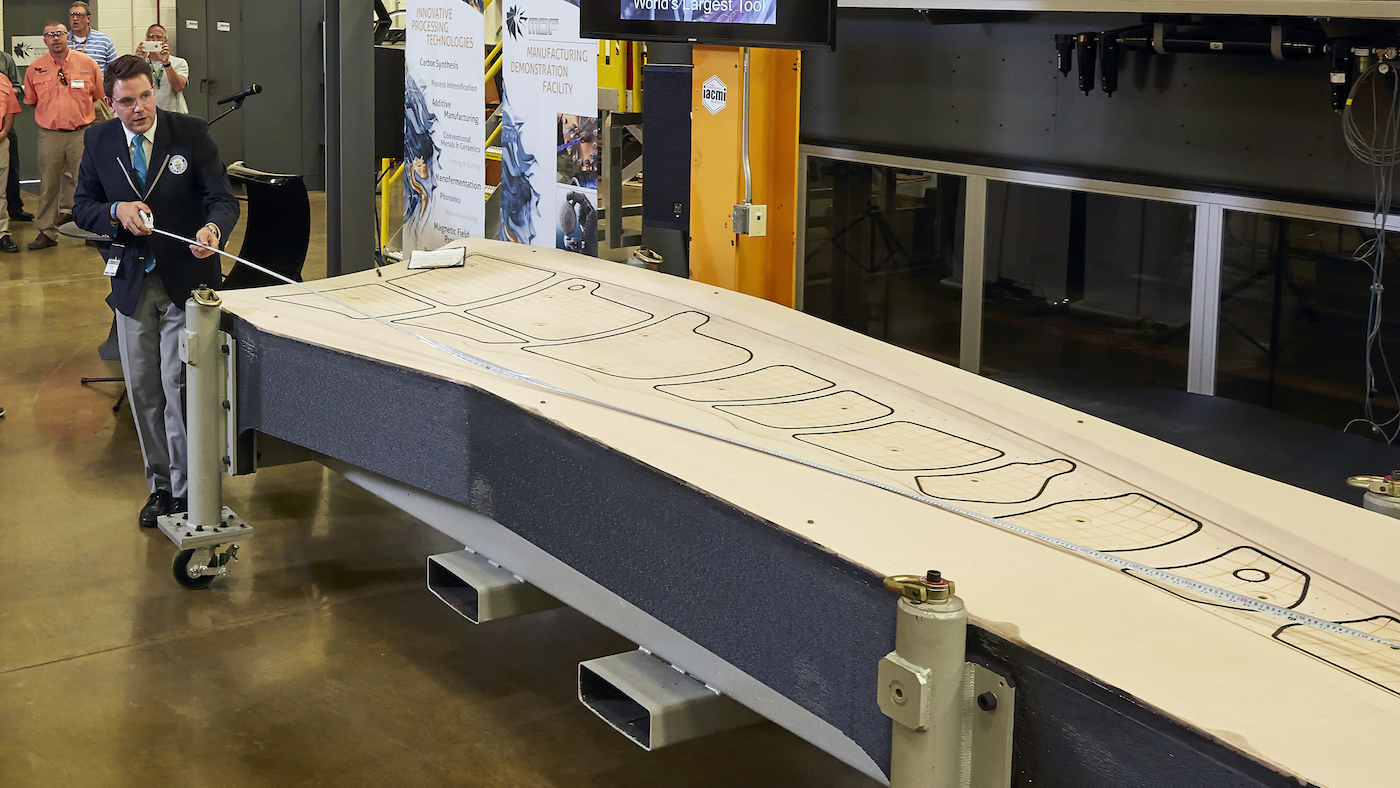
Boeing set a Guinness World Record for the largest solid 3D-printed item this August, with a 17.5ft-long, 5.5ft-wide and 1.5ft-tall wing trim and drill tool that weighs 1,650 lb and will be used to secure the B777X aircraft’s composite wing skin for drilling and machining. The wing trim and drill tool would normally have taken around three months to manufacture, but as a 3D-printed part it was created in only 30 hours, according to Boeing.
“This is just an example of what we can do with additive manufacturing,” states Leo Christodoulou, materials and manufacturing chief engineer at Boeing. “Additively manufactured tools will save energy, time, labor and production cost and are part of our overall strategy to
apply 3D-printing technology in key production areas.”
The tool was printed at the US Department of Energy’s Oak Ridge National Laboratory (ORNL), a Boeing research partner. Boeing has collaborated with ORNL since 2014 to develop a week-long training program for its engineers, focused on 3D printing. More than 100 Boeing engineers have already completed the course.


